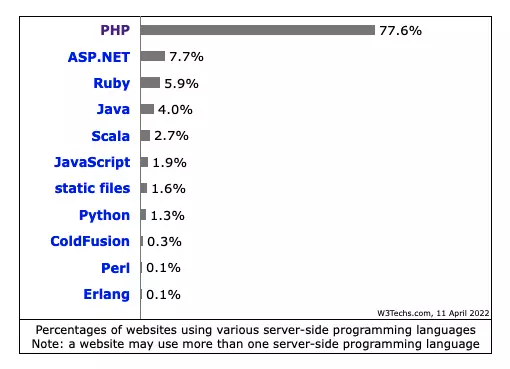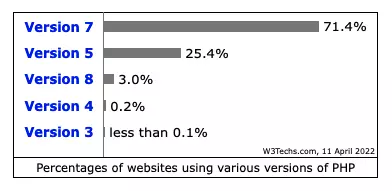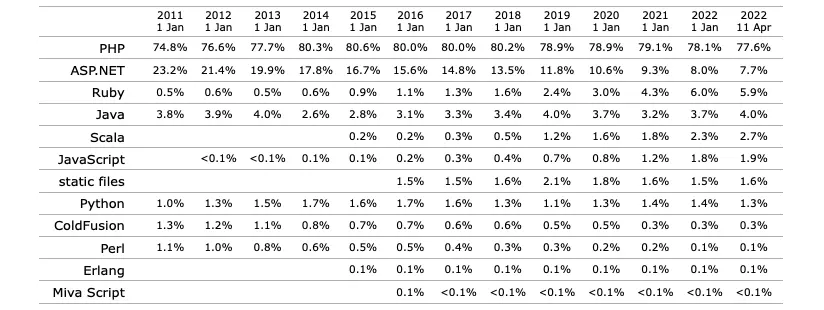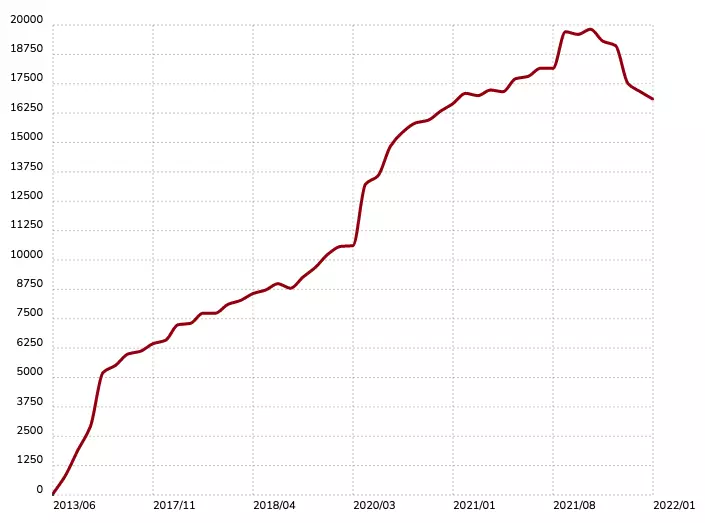2022 PHP Usage Statistics
By Dillon Smart · · · 2 Comments

PHP: Hypertext Preprocessor is the most popular language used on the web. Around 77.6% of all websites run PHP in some way as of April 2022. PHP has been the driving force behind the growth of the web, but is it slowly dying? Let’s look at some PHP usage statistics.
Why is PHP so popular?
PHP first arrived on the scene in 1995 and it quickly became the go-to language for building web pages. The language grew in popularity from the ease of integrating PHP code into HTML.
PHP has a number of built-in functions that help speed up development. With the release of frameworks that included built-in libraries and tools, the speed of development drastically increased.
Did you know Facebook was first built on PHP 4.3? PHP 4.3 was the first version that introduced the PHP command-line interface (CLI).
In 2003, WordPress was released which made it easier to create blogs and websites. WordPress now powers over 37% of the entire web alone!

PHP Version Usage
As of writing, PHP 8.1 is the latest version released. Below are some stats that show the usage statistics for each PHP version as of April 2022.

As you can see, there is an alarming amount of websites that use older unsupported versions of PHP.
PHP version 4 still powers 0.2% of websites. That might not sound like a lot, however, that equates to around 18,000 websites are using the same version of PHP as Facebook used back in 2004!
In total, the statistics show that around 872,820,000 websites are running unsupported versions of PHP.
It’s important to keep your website updated with the latest security patches, Learn how to change your PHP version.
PHP usage over the years
PHP began to see a rise in usage between 2011 and 2018, before a slow drop off to the present day. This rise can possibly be attributed to the release of Laravel, the most popular PHP Framework, and Composer, the Dependency Manager for PHP.
PHP usage statistics vs other service side languages:

Laravel usage statistics:

Conclusion
Looking over the statistics, it’s clear PHP is still a very popular programming language, and it doesn’t look like it’s going away any time soon. With the help of WordPress and Laravel, PHP has been cemented in the foundations of the web.
Sources:
2 Comments
Why Use Symfony for Enhanced Web Application Development? - DesignCoral
[…] the need grows. Daily new websites for goods and services flood the market. Research indicates that 77% of websites are built using PHP […]
List of programming languages used for Web Development - IKnowThatNow
[…] PHP is used by around 77.6% of all websites, making it the most popular server-side language used on the web. […]